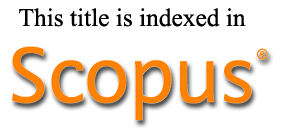Artificial intelligence in higher education: Ethical and pedagogical challenges and the role of public policies
DOI:
https://doi.org/10.20448/jeelr.v12i3.6900Keywords:
Artificial intelligence, Early childhood education, Gender differences, Higher education, Primary education, Public policies.Abstract
This article examines AI use in early and primary education, identifying ethical and pedagogical challenges for equitable policies. It also highlights research gaps on how technologies such as chatbots worsen educational inequalities, especially across gender and socioeconomic contexts and emphasizes the need for regulations ensuring responsible AI use. This is a non-experimental, cross-sectional, ex post facto quantitative study. The sample consisted of 252 university students with a margin of error of 3.21%. A 45-item questionnaire focused on chatbots was used to assess knowledge, use, and perceptions of AI. McDonald’s omega reliability coefficient was above 0.82 across all four dimensions. Descriptive, correlational, and inferential analyses were conducted using IBM SPSS v26. Results indicate that students perceive chatbots as useful for organising ideas and retrieving information although concerns exist about overreliance. Significant gender and degree programme differences were found (p < 0.05 and d > 0.4) with male primary education students showing greater familiarity with and use of AI. This familiarity positively correlates with improvements in idea organisation suggesting an impact on academic performance. The conclusions call for equitable public policies and adequate teacher training to prevent AI from deepening educational inequalities, especially among women and students from vulnerable backgrounds.




